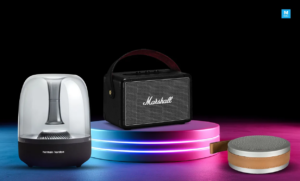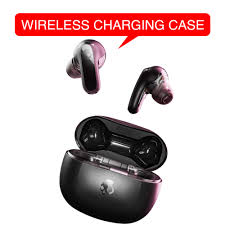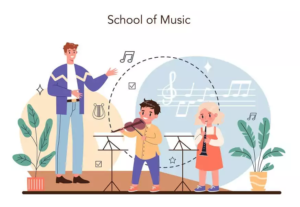Introduction:
In an era where technology permeates every facet of our lives, the music industry stands as a testament to its transformative power. The synergy between tech, music, and gadgets is reshaping how we create, consume,
and interact with music, driving a wave of innovate on that enhances our auditory experiences. This blog explores the cutting-edge advancements at this intersection, highlighting how they are revolutionizing the soundscape.
- Wireless Audio Revolution:
Bluetooth Speakers:
Bluetooth speakers have become a staple for music enthusiasts, combining portability with high-quality audio. These devices, such as the JBL Charge and Bose SoundLink, have evolved significantly, incorporating features that enhance user experience:

Voice Assistants: Integration with AI assistants like Amazon Alexa and Google Assistant allows users to control their music and smart home devices hands-free.
Durability: Waterproof and rugged designs ensure these speakers can withstand various environments, from poolside parties to outdoor adventures.
Multi-Room Functionality: Advanced models offer the ability to connect multiple speakers, creating a synchronized audio experience throughout the home.
True Wireless Earbuds:
True wireless earbuds, epitomized by Apple’s AirPods Pro and Sony’s WF-1000XM4, provide unparalleled convenience and advanced audio technology. Their standout features include:

Active Noise Cancellation (ANC): This feature blocks out ambient noise, offering an immersive listening experience even in noisy environments.
Extended Battery Life: Innovations in battery technology now allow for longer listening times and quick charging capabilities.
- Smart Home Audio Ecosystems:
Smart Speakers:
Smart speakers have become integral to the modern home, offering a blend of music playback and smart home control. Popular devices like Amazon Echo and Google Nest Audio offer:
Voice Control: Users can play music, control smart home devices, set reminders, and more using simple voice commands.
Enhanced Sound Quality: These speakers deliver rich, clear audio thanks to advanced acoustic engineering.
Multi-Room Audio Systems:
Multi-room audio systems, such as those from Sonos, enable users to stream music wirelessly to multiple speakers throughout their home. Key features include:
Centralized Control: Manage your entire audio setup through a single app, adjusting volume and playback settings for each room.
Wireless Connectivity: Enjoy hassle-free music streaming without the need for extensive wiring.
- Advanced Music Production Tools:
Digital Audio Workstations (DAWs):
Digital Audio Workstations (DAWs) are the backbone of modern music production, offering comprehensive tools for recording, editing, and mixing music. Leading DAWs include:

Ableton Live: Known for its intuitive interface and powerful live performance capabilities.
Logic Pro X: A favorite among Mac users, offering a robust suite of instruments and effects.
FL Studio: Renowned for its user-friendly interface and extensive plugin support.
These platforms empower musicians to create professional-quality recordings from their home studios, democratizing music production.
MIDI Controllers:
MIDI controllers are essential for interacting with DAWs and other music software, providing tactile control over various parameters. Types of MIDI controllers include:
Keyboard Controllers: Ideal for playing and recording melodies and chords.
Pad Controllers: Perfect for beat-making and triggering samples, with models like the Akai MPD and Ableton Push.
Control Surfaces: Provide physical faders and knobs for more hands-on control of mixing and effects within your DAW.
- Immersive VR and AR Music Experiences:
VR Concerts:
Virtual Reality (VR) is revolutionizing live music experiences, allowing fans to attend concerts virtually. Platforms like Oculus Venues and MelodyVR offer:

360-Degree Viewing: Experience concerts from multiple angles and feel as if you are part of the crowd.
Interactive Elements: Engage with performances through virtual environments and avatars.
AR Music Apps:
Augmented Reality (AR) is transforming how we engage with music, overlaying digital elements onto the physical world via smartphones and AR glasses. Examples include:
Interactive Album Covers: AR apps bring album art to life with animations and additional content.
Music Learning Tools: Apps like Yousician overlay digital instructions onto real-world instruments, making learning more intuitive and engaging.
- Wearable Music Technology:
Smart Headphones:
Smart headphones combine traditional audio functionality with advanced sensors and connectivity features. Leading examples include:

Biometric Monitoring: Track heart rate, steps, and other fitness metrics while listening to music.
Adaptive Sound: Automatically adjust the audio profile based on your environment and listening preferences.
Voice Assistants: Access Google Assistant, Siri, or Alexa directly from your headphones for hands-free control.
Music-Enabled Smartwatches:

Smartwatches equipped with music playback capabilities, such as the Apple Watch and Samsung Galaxy Watch, offer:
Offline Playback: Download and store music directly on the watch, eliminating the need for a phone during workouts.
Streaming Services: Access services like Spotify and Apple Music from your wrist.
- AI in Music Creation and Recommendation:
AI-Powered Music Recommendation:
Music streaming services like Spotify and Apple Music use artificial intelligence to curate personalized playlists.

Custom Playlists: Weekly mixes and daily recommendations tailored to individual tastes.
Discovery Tools: Help users find new music based on listening habits and trends.
Mood and Activity Playlists: Suggestions based on the time of day, weather, or user activities.
AI-Generated Music:
AI technology is making waves in music creation, with platforms like OpenAI’s MuseNet and Amper Music capable of composing original tracks. Features include:
Genre Blending: Create music that combines elements from multiple genres.
Custom Compositions: Generate music tailored to specific moods, themes, or projects.
- Enhanced Music Learning and Education Tools:
Online Music Lessons:
The proliferation of high-speed internet and digital tools has made learning music more accessible than ever. Platforms like MasterClass, Coursera, and YouTube offer:

Professional Instructors: Learn from industry professionals and renowned musicians.
Interactive Lessons: Engage with tutorials that offer real-time feedback and progress tracking.
Diverse Content: Access lessons on a wide range of instruments, genres, and skills.
Educational Gadgets:
Innovative gadgets are making music education more interactive and enjoyable. Examples include:
Digital Sheet Music Displays: Devices like the GVIDO provide electronic displays for sheet music, allowing for easy annotation and page-turning.
Smart Instruments: Products like the Jamstik+ smart guitar offer digital connectivity, enabling real-time feedback and integration with learning apps.
Conclusion:
The intersection of technology, music, and gadgets is a vibrant space teeming with innovation, continually pushing the boundaries of how we create, consume, and experience music. From the convenience of wireless audio devices and smart home systems to the immersive possibilities of VR concerts and AI-generated compositions, advancements in tech music and gadgets are transforming the industry and our daily lives.

